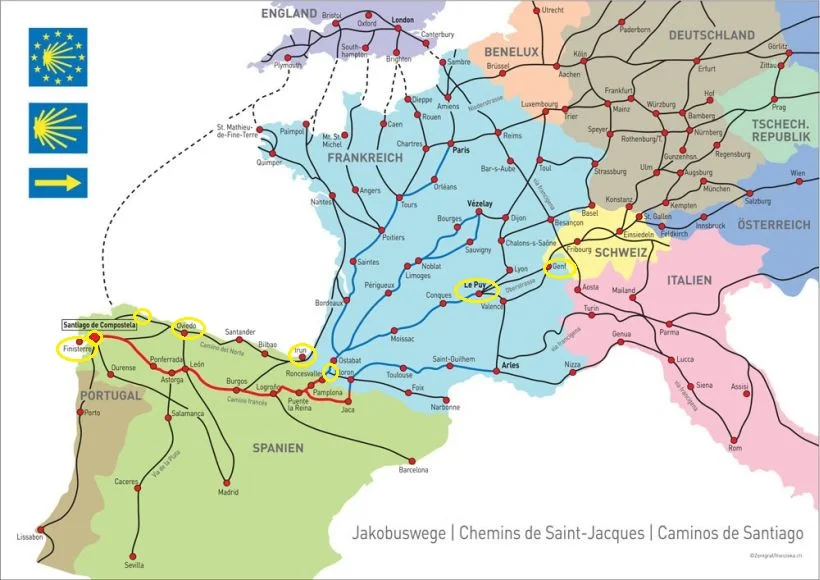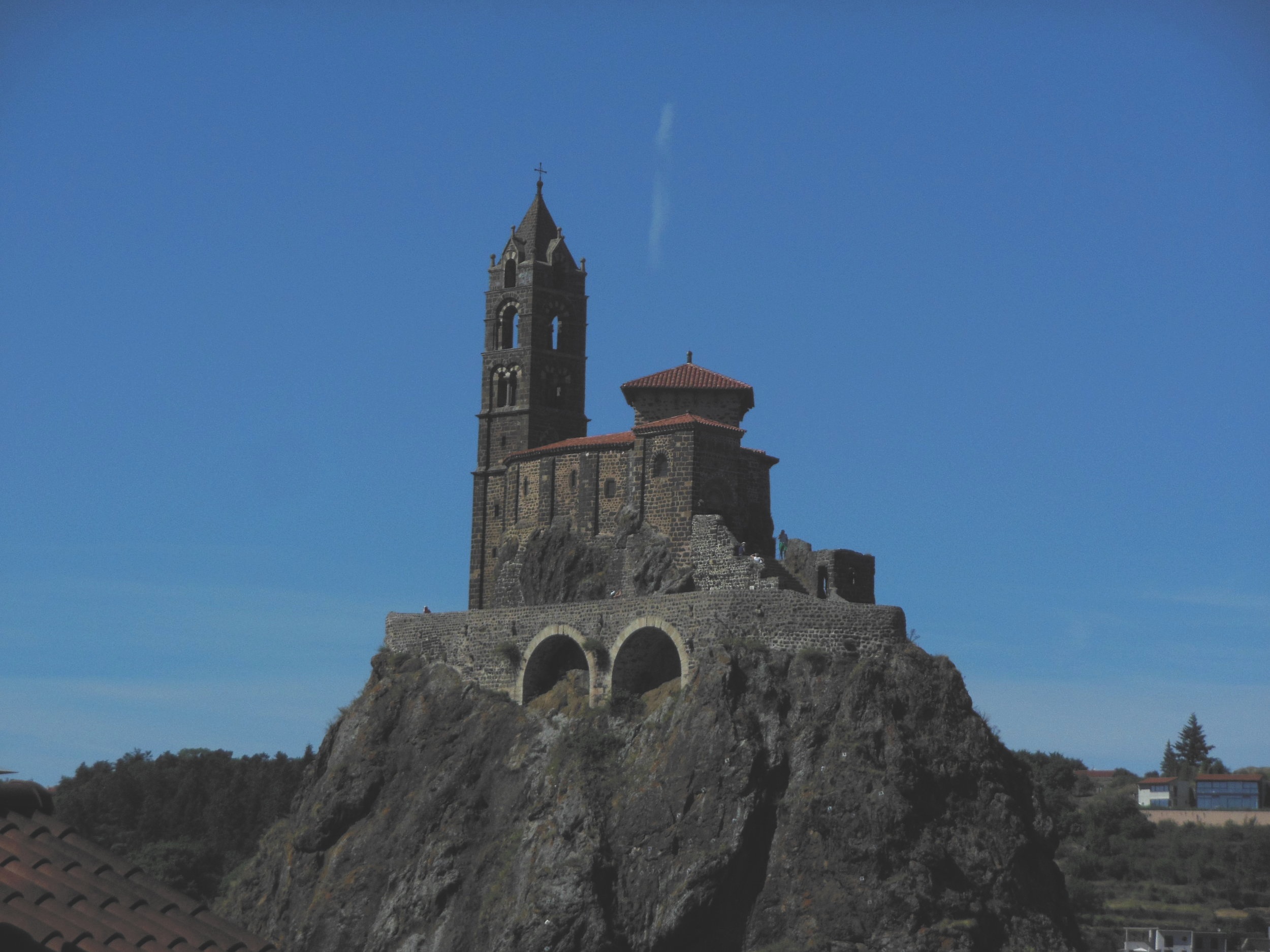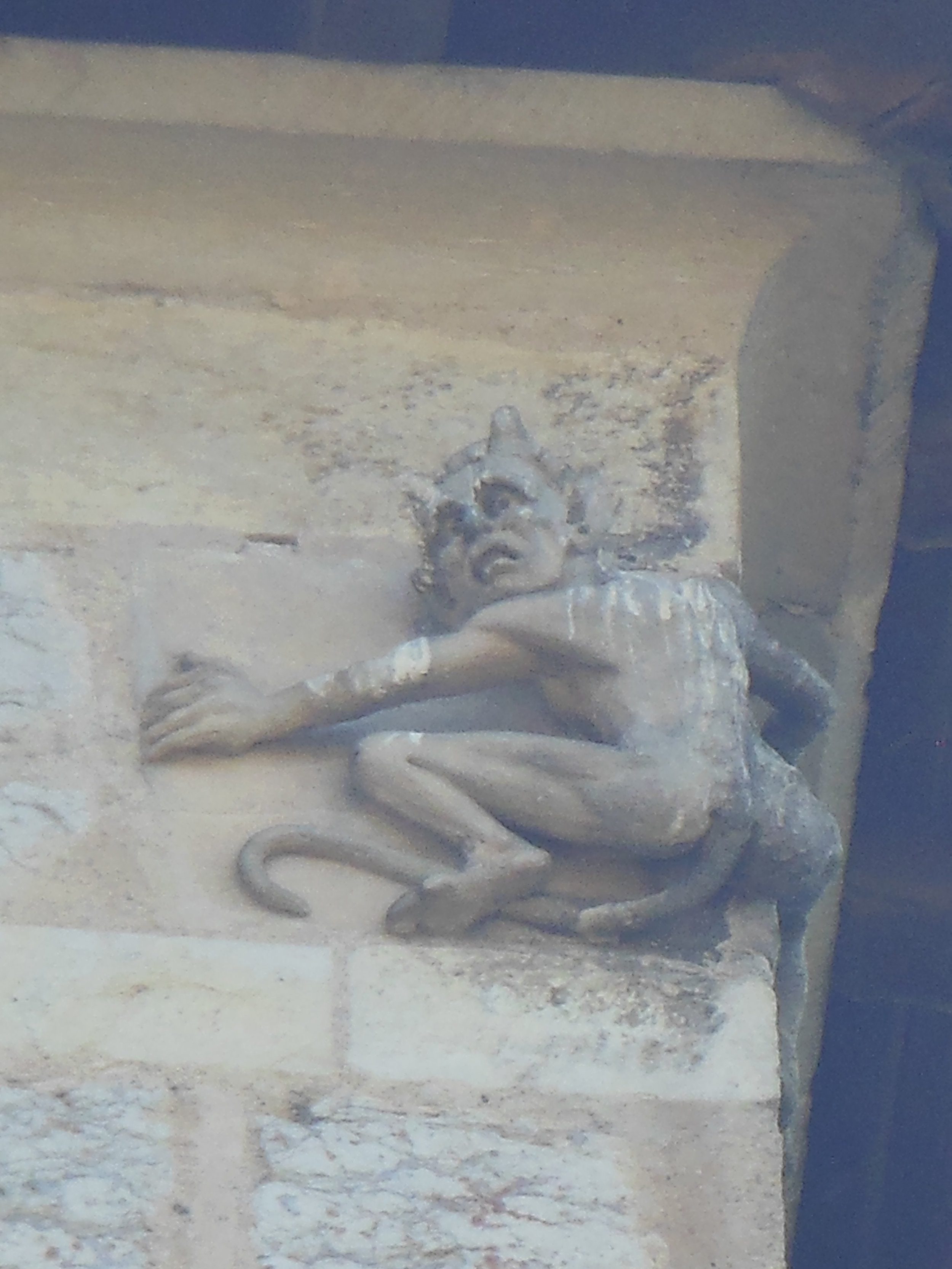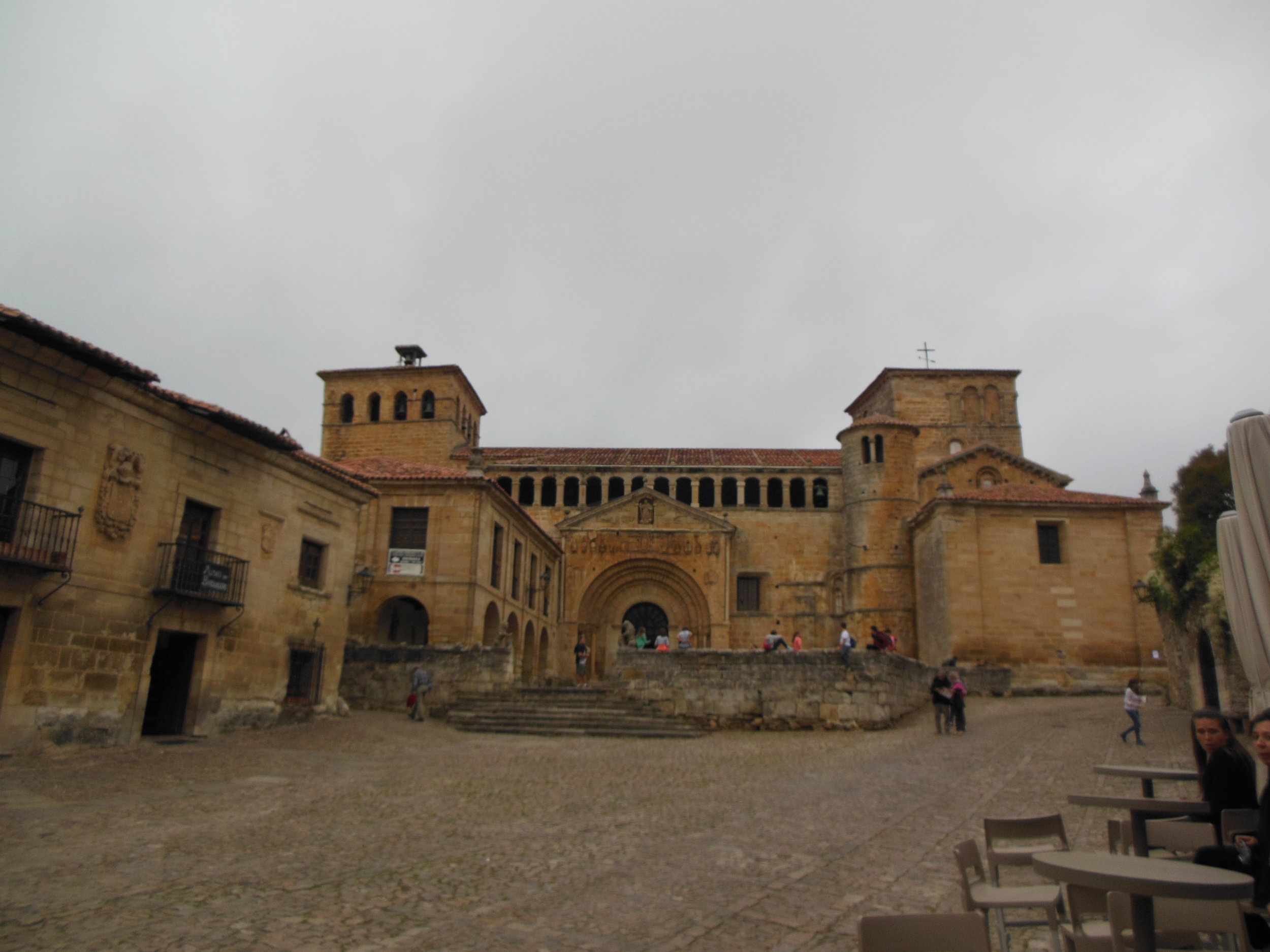Walking 2200 Km on the Camino de Santiago: Art Historical Highlights
/Enjoying the beauty of the landscape, © all images by the author if not otherwise stated
That's it I am back from three incredible months—time flies by so quickly. I am still trying to find a way to organize all my notes and photos in order to make this experience last as long as possible. I guess that my biggest fear is to forget the feeling I had while on the journey: the peace of mind, the feeling of being able to listen to my own rhythm, and the sense of adventurous curiosity. Completing a long-distance hike makes you feel powerful, not because of the mere number of kilometers you walked, but because you know that these days were filled with willpower and persistence, as you walked in the pouring rain, while being (stomach) sick or afraid of the route. And yet, there were so many moments of joy, meeting interesting people, merging into the beauty of nature, and being in a save bubble without constant internet access.
I started my journey in Geneva on the Via Gebennensis to Le-Puy-en-Velay, one of the less prominent routes along the Camino, and, therefore with less immense historic sites, but very fine examples for glass windows and beautiful little chapels. The route was marked relatively new in the 1990s as part of the Camino de Santiago, but is part of the historic pilgrim network as several medieval hospitals along the way bear witness. Le-Puy-en-Velay has a long tradition as a starting point for pilgrims in the middle ages. I continued the way on the Via Podiensis, one of four routes through France, until St.-Jean-Pied-de-Port. From there I crossed the lower Pyrenees up to the north entering Spain through Irun. For the last part I followed the Spanish coastal line on the Camino del Norte to Santiago de Compostela.
Source: www.pilgern.ch
The most frequently asked question I got before starting the sabbatical was, why I chose the St. James trail, the Camino the Santiago, one of the oldest pilgrimage routes stretching across Europe. People have this impression that you are just "allowed" to walk this trail if you are religiously devoted or absolutely lost in life. None of these were my motivations. As I said before I left, I went on this adventure when everything was flowing easily—no drama, no crisis, no lostness. Instead, I felt an immense curiosity of how things develop when you cannot plan every day ahead and you have to trust in what is coming along your way, what I am able to achieve physically, what I will see while walking on such an old and powerful route, and of course I wanted some peace of mind, some room for thought.
Walking through parts of Switzerland, France and Spain and seeing all kinds of religious art and architecture left a deep impression on me. The Way of St. James was one of the most important Christian pilgrimages during the Middle Ages, together with those to Rome and Jerusalem. Therefore, art was used to praise Christianity and divide the secular world from the spiritual. Despite being religiously inclined nowadays or not, one will notice the effort and beauty in these works of art. I am fascinated by the human scale within the architectural buildings; they are impressive, built to guide you through the buildings, reflect society (in particular the level of wealth and influence) and are examples for the finest craftsmanship of their age. In my opinion I would make at least two weeks on the Camino de Santiago mandatory for Art History and History students. And, I would insist to explore the route walking, as distances reveal why certain points were of strategic importance, and there is a certain indescribable magic of seeing the power of a monastery, church or fortress after having walked for hours in the solitude of nature. So, in a side note, if you know any institutes that would be interested in such a guided field trip let me know.
The earliest records of visits paid to the shrine dedicated to St. James at Santiago de Compostela date from the 9th century. Over the centuries the pilgrimage became more and more known, until it reached a new peak in the 12th century when Pope Callixtus II introduced the Compostelan Holy Years, and pilgrims would be eager to walk sometimes for months or years to do penance and get the remission of their sins. It was a very dangerous journey for pilgrims back then, as illness and robber bands were waiting all along the route, so that in the end only a few could make it. The need for infrastructure and safety influenced the landscape and in particular the buildings along the Camino. The daily needs of pilgrims on their way to and from Compostela were met by a series of hospitals, some Spanish towns still bearing the name. On the most dangerous paths monasteries or fortifications were build where pilgrims would find safety, free meals and space to rest. Often little villages developed in this solitary environments benefiting from the infrastructure and the trading with pilgrims. A network among the monasteries and churches was established and increased the power of the ecclesiastical institution. The infrastructure was protected by kings and connected whole areas to one another. Soon this cultural network became a powerful system to connect the spiritual needs with the worldly: trade and knowledge exchange flourished.
In art the Romanesque architecture characterized by massive archways becomes the predominant art form in the time where the pilgrimage reached its peek. The development of art and the Camino de Santiago are closely interlinked. Combining features of ancient Roman and Byzantine buildings and other local traditions, Romanesque architecture is known by its thick walls and semi-round arches; the churches are low and solid because they were used for protection and appeared as fortresses.. An incredible number of abbeys, monasteries and churches were build in this style and occasionally rebuild in the following centuries later in the Gothic style. Nowadays the finest examples for Romanesque architecture can be found in the areas were the subsequent architectural periods were not predominant, including parts of southern France, northern Spain and rural Italy, in the majority areas where the Camino de Santiago was popular.
In the present the number of pilgrims completing the route has been steadily rising. The motivation for committing to such a form of travelling is different for everyone. I met a young investment bankers who was in need of a break, a young engineer searching for the athletic challenge, a young woman working for years in the NGO field, who felt burnt out and was indeed searching for spiritual guidance, a woman trusting her guts and travelling for one gap year in a time where everyone told her to play save as she was in her 30s, a 81 year old man grieving the death of his wife and trying to escape his solitude started his journey in Germany, well knowing that he might not reach his destination or the way back home. There are lots of stories and one can see recurring patterns for the motivations, but in the end every story is different.
The magic of the Camino is formed through the people you meet along the journey, the surprises you experience, the comfort of minimalism (in the end you carry all you need in a backpack) and the historic sites you feel strangely connected with because during the journey one becomes part of the legacy of the pilgrimage. Walking on a route that forms the cultural heritage of Europe in a time where we mistrust European economic and political structure puts it back into perspective that Europe is based on cultural principles. It is a naive fallacy to believe that Europe is defined through a mere economically benefiting status. Since 2011 we learned that numbers fail and societies have always been built around communities that care for each other.
Switzerland
Geneva
Geneva, Camino de Santiago, © Anabel Roque Rodriguez
Until Le-Puy one passes five French départements: Haute-Savoie, Savoie, Isère, Loire and Haute-Loire. Even though the Camino is not as frequented as the other paths are, it is very well marked with characteristic blue and yellow shells. The route follows the same path as the French long-distance GR (Grande Randonnée) 65 - so there were plenty of white-on-red signs, that provide additional orientation.
Geneva is a wonderful city to start in. The city offers a diverse list of cultural things to do. On the first kilometers from Geneva to Le Puy there were almost no other pilgrims. We met around 10 people in total, who were already on the Camino for weeks as they started in Germany or on the Swiss-German border. It is a strenuous route with lots of hills and mountains that need to be crossed. The nature amazed me every day while walking along the Rhône river, tranquil vineyards and calm forests. On the way you will pass tiny villages, if you are lucky you can buy food there or enjoy the luxury of a coffee or ice-cream (so comforting in the summer heat!). Most of the villages I passed lacked such a really needed infrastructure and made it on some occasions really hard to keep up the moral. During summer time most of the little corner shops are closed for days in a row. With this in mind, make sure to travel with daily provisions (nuts, cookies, and cereal bars) and to go grocery shopping for some days ahead when you have the possibility to actually buy something.
France
Le Puy-en-Velay
cathedral Notre-Dame-du-Puy, © Anabel Roque Rodríguez
Le Puy-en-Velay, © Anabel Roque Rodríguez
Saint Michel d'Aiguilhe, Camino de Santiago, © Anabel Roque Rodriguez
Inside Saint Michel d'Aiguilhe, Camino de Santiago, © Anabel Roque Rodriguez
We arrived in Le Puy one day before the big celebration on August 15 (Assumption Day), when around 15 000 people hold a huge procession to celebrate St. Mary. It's an incredible event to watch. Apart from visiting the beautiful Cathedral of Notre-Dame-du-Puy you should climb the 268 steps up to the Chapel of Saint Michel d’Aiguilhe and enjoy the incredible view over the city. After this workout enjoy a good plate of the famous Le Puy lentils. The best place I've eaten a lentils variation in was at the vegetarian restaurant right next to the cathedral L'Ame des Poètes - the lentils lasagna is a dream!
Aubrac
Notre-Dame-des-Pauvres and the Tour des Anglais in Aubrac, Camino de Santiago, © Anabel Roque Rodriguez
The countryside called Aubrac in the southern Massif Central of France was a personal highlight for me. The landscape feels mystic and unpredictable due to changes of weather conditions: the sudden rise of thick ground fogs that veil the hills and the bright sunlight that illuminated the large green and rocky plateaus. In the middle ages this area was particularly dangerous and several pilgrims lost their lives due to robber bands. As a result for the need to protect and care for the pilgrims passing this area, a returning Flemish pilgrim founded the monastery with a hospital, a church and a shelter for pilgrims. As the fog becomes so thick one can barely see anything, the bell of the church, the so called Cloche des Perdus (Bell of the Lost), guided the way for pilgrims. The monastery does not exist anymore but the church Notre-Dame-des-Pauvres and the famous Tour des Anglais, where pilgrims can still sleep, remain.
Conques
Abbey Church of Sainte-Foy , © Anabel Roque Rodríguez
Last Judgment tympanum, abbey of Sainte‐Foy, France, Conques, Camino de Santiago, © Anabel Roque Rodríguez
In the middle of the mountains, Conques, © Anabel Roque Rodriguez
Conques lies on the steep side of the Dordou valley surrounded by mountains. The Abbey Church of Sainte-Foy builds the heart of the surrounding little village with its narrow, steep streets and the beautiful half-timbered houses. One of the treasures at the abbey is the Last Judgment tympanum (1050–1130) at the central portal.
Figeac
Joseph Kosuth, Rosetta Stone, Figeac, Camino de Santiago, © Anabel Roque Rodríguez
I celebrated my 30th birthday in this little town and it treated me very well! As I am particularly interested in languages it seems a perfect fit for me. Jean-François Champollion, who deciphered Egyptian hieroglyphics, was born in Figeac. One can visit the Champollion Museum which deals with his life but also with different aspects of language. The artist Joseph Kosuth designed the Place des Ecritures with an exact enlarged reproduction of the Rosetta stone. The historical center of the Figeac dates in parts as far back as the 9th century, and the town still has many houses and small palaces dating from the 13th - 16th centuries, when the village was an important trade center.
Vallée du Célé
Vallée du Célé © Anabel Roque Rodríguez
Right after Figeac along the river Célé starts the corresponding valley. The main impression on the trail is the massive limestone through which the river cut over time. One needs to follow the river and has to cross the mountains more often than expected. The meanders have carved and shaped a series of abrupt cliffs, narrow paths and canyons into the massive rocks. The villages we came across were sometimes built into the limestone or stretched into the green hills. My highlights were the Abbey of Marcilhac sur Célé, the village of Cabrerets, and right in the end of the valley, where the river Célé meets the bigger Lot, the tiny village Vers, where I ate the best Créme Brulée of my life in La Truite Dorée.
Cahors
Pont Valentré, Cahors, Camino de Santiago © Anabel Roque Rodriguez
Detail Devil, PONT VALENTRÉ, CAHORS, © ANABEL ROQUE RODRIGUEZ
Cathedral St-Étienne, Cahors, © Anabel Roque Rodriguez
Cahors is surrounded on three sites by the Lot river. The iconic Valentré Bridge is the emblem of the city, spanning the river with its three fortified towers. As soon as one sees the massive bridge it becomes clear that the river itself must be impressive when the water reaches a certain level. The legend tells that the architect had to get into a deal with the devil to be able to finish the bridge, if you look closely a little devil appears on one of the towers. The cathedral St-Étienne is a example of the transition between late Romanesque architecture and the Gothic.
Moissac
Saint-Pierre abbey, Camino de Santiago, © Anabel Roque Rodriguez
South-west portico of St. Pierre, Moissac, Camino de Santiago, © Anabel Roque Rodriguez
The highlight of Moissac is undeniable the abbey of St-Pierre. Its two treasures are the cloisters with 76 capitals, and the sculptures of the portal particularly the trumeau - the central door pillar - which are among the finest examples of Romanesque art.
Spain
Guernica
Gernika, Camino Santiago de Compostela, © Anabel Roque Rodriguez
To visit Guernica has been since a long time on my bucket list. The city earned sad international recognition through its devastating bombing on 26 April 1937 carried out by German and Italian air forces. The aerial bombing destroyed big parts of the city, which explains why the city nowadays does not have a traditional old city center. Pablo Picasso took the historic events and created later on one of the most iconic war depictions of Western culture.
Historians are still discussing on why particularly the city of Guernica was selected as a target. Nevertheless, it is undoubted that Guernica has had an important role in Basque history and that it is closely connected to the autonomous development of the region. The Biscayan Assembly and the Guernica Tree, that fortunately both survived the bombing, are located in the town. I am fascinated by the history of the Tree of Gernika (Gernikako Arbola in Basque). It was a common thing for leaders of various communities in Europe to come together under a tree to create laws and make agreements throughout the Middle Ages. The Guernica Tree is one such tree that was used as a meeting point for the Basque communities and the Lord of Biscay. It was underneath its branches where the Lords of Biscay swore to respect the Biscayan liberties and where they established a set of laws known as fueros, that granted the Basques with autonomous rights and laws. It remains a ritual to this day that the the President of the Basque Government, known as the lehendakaria, is sworn into office underneath the tree. Whenever the oak tree looks like dying, a new one is planted next to it using an acorn from the existing tree. Currently the 5th tree is growing, which was planted in March 2015.
Another highlight of Guernica is the Gernika Peace Museum Foundation, a museum dealing with the history of the city, in particular with the bombings, but also investigating through different temporary exhibitions and conferences the culture of peace and war.
Bilbao
Guggenheim Bilbao, Camino Santiago de Compostela, © Anabel Roque Rodriguez
Bilbao is one of my favorite cities throughout Europe: The superb cultural variety, the thoughtful city planning and the well working public transport turned the city from a industrial wasteland into a modern cultural city.
During the industrial revolution the city shifted its economic activity almost exclusively to the iron and steel industry and ship building. The city would become a major employer in these industries for the region. It was, in fact, this lack of diversification which would eventually result in severe consequences for Bilbao during the industrial crisis of 1975, leading to significant unemployment and workers who were not longer able to afford living in the city. During these dark times the city government started with the transformation process for the city. The city provides a very interesting ebook to reconstruct the changes. The elements for the transformation of Bilbao are based on three pillars:
Mobility and infrastructure: new metro system and the enlargement of the airport, as well as the connection to other important cities in the areas.
Inclusion and public realm: Bilbao’s urban strategy is not just focused on the city center but includes also outer areas. Another major part has been the reshaping of the river banks which constitute the heart of Bilbao’s new public realm.
Economic strategy: The city was able to re-brand itself from an industrial city to a globalized cultural hotspot. Through careful investments, like the possibility to host the Guggenheim Museum, the city was able to translate the investments into new revenue streams through the attraction of new businesses and international investors.
One day is usually not enough to dive into the city life, I absolutely recommend to take a couple of days extra. For some inspiration on what to do, have a look here.
SANTILLANA DEL MAR
Santillana del Mar, © Anabel Roque Rodriguez
There is an old saying that Santillana del Mar is The Town of Three Lies, since it is neither holy (Santo), nor flat (llana), nor is it by the sea (Mar) as implied by its name. The medieval city developed around the Colegiata Santa María, a Romanesque church and former Benedictine monastery. It is a beautiful city to stroll through and to get lost in centuries of history. Only 2 kilometers away from the town are the Altamira Caves located, famous for its cave paintings. Created between 18,500 and 14,000 years ago, the caves feature drawings and polychrome rock paintings of wild mammals and human hands. The original caves are closed to the public due to its delicate conservation conditions, but next to the original caves a replica cave (Neocueva) and museum were built that give fantastic insights.
SOBRADO DOS MONXES
Abbey Sobrado dos Monxes, Camino Santiago de Compostela, © Anabel Roque Rodriguez
Sobrado dos Monxes, Camino de Santiago, © Anabel Roque RodrIguez
Different to the Camino Frances the Camino del Norte does not offer too many opportunities to sleep in monasteries. Sobrado dos Monxes is such a special occasion. Founded in the 10th Century by Benedictine monks and later managed by Cistercian, the abbey has a varied history. The architecture changed over the centuries, which explains why some parts of the building, like the kitchen, date back to the middle ages, while other parts were built in the 17th century.
Santiago de Compostela
Cathedral Santiago de Compostela, © Anabel Roque Rodriguez
On the roof of the cathedral of Santiago de Compostela, © Anabel Roque Rodriguez
It is incredible difficult to try to write a short paragraph about this city as it offers so many different angles. Let me just share with you, that if you want to have an extraordinary view around the cathedral try to book the rooftop guided tour. The tour is offered in different languages and will give you an introduction to the meaning of the cathedral accompanied with breathtaking views. As you can see in my images and will actually notice once you are in front of the cathedral, the building is currently undergoing one of its first major renovations, which looks like a major project for the next years.
Finisterre
Finisterre, Camino de Santiago, © Anabel Roque Rodriguez
Lighthouse Finisterre, Camino de Santiago, © Anabel Roque Rodríguez
The last part of the journey from Santiago de Compostela to Finisterre is believed to be older than the Camino and to be connected to a pre-Christian route to the pagan temple of Ara Solis in Finisterre, erected to honour the sun. Until the discovery of the Americas, Finisterre was – as its name suggests – believed to be the end of the world. Once you arrive at the little town of Finisterre there is a 3 Km way along the coast to the lighthouse, where you can see spectacular sunsets. The lighthouse was built in 1853, and its light can be seen from 30 kilometres out at sea. The sea is treacherous and rough in this part of the coast, numerous fisher boats went missing and vessels are lying at the ground of the Atlantic, and with them the lives of those working out there. Therefore, the sea in this part of Northern Spain was given the appropriate name, Costa da Morte, the Coast of Death. It is magical to sit here and reflect about everything one experienced during the journey. For most of the pilgrims it is the end of their travel and one can sense happiness and sadness in the air.
[UPDATE] I've been interviewed by the wonderful author and world traveler Sebastian Canaves for his Off The Path project. In this conversation we talk about my experiences on the Camino de Santiago. It's in German :-)
































